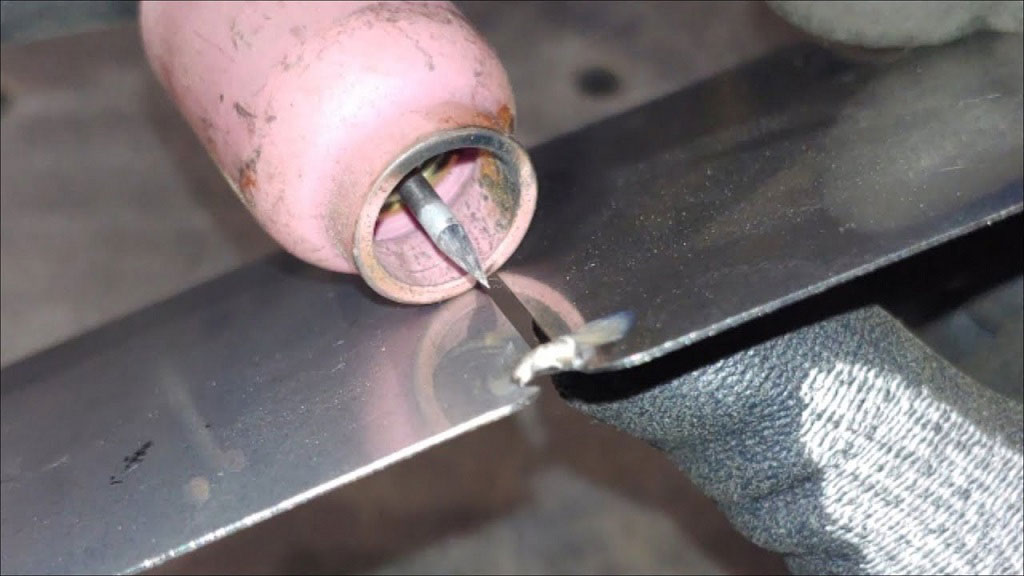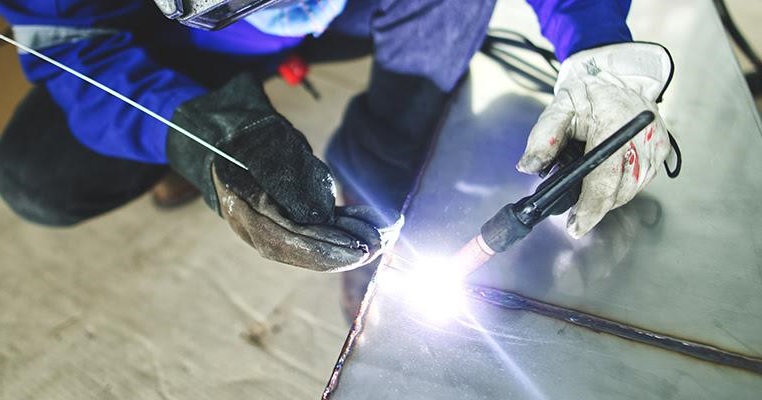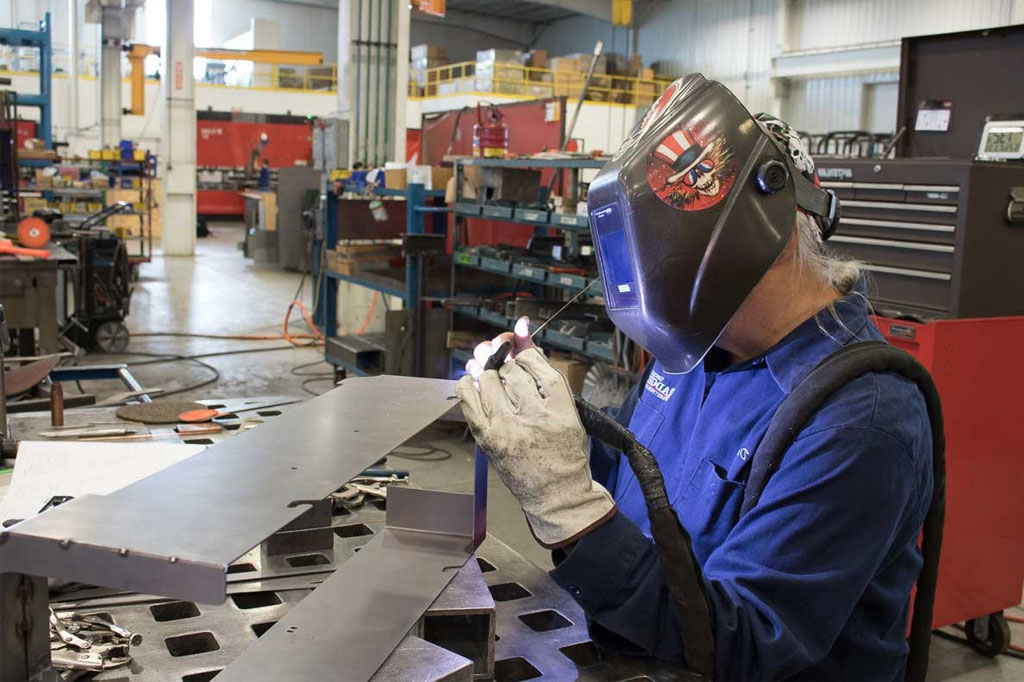Welding thin metals is a critical process in industries ranging from automotive to aerospace, electronics, and manufacturing. While welding thin sheets presents unique challenges, applying best practices ensures high-quality welds that meet the demanding requirements of precision and strength.
This article delves into the challenges of thin metal welding and outlines best practices to overcome these hurdles.
6 Challenges in Thin Metal Welding

Thin metal welding presents unique challenges, including heat distortion, reduced penetration, and difficulty in maintaining strength and integrity. Understanding these issues is crucial for achieving high-quality, precise welds in thin materials.
1. Distortion and Warping
Thin metal sheets are more susceptible to heat-induced distortion than thicker metals. This can alter the shape and alignment of the workpiece, potentially compromising the integrity of the final product.
2. Heat Affected Zone (HAZ) Control
Thin metals have a reduced tolerance to heat. A large Heat Affected Zone (HAZ), created during welding, can weaken the material, causing undesirable changes in the properties of the metal, such as brittleness, reduced strength, or discoloration. Controlling the size and impact of the heat-affected zone (HAZ) is essential for preserving the metal’s mechanical properties.
3. Inconsistent Welding Pool
With thin metals, maintaining a stable welding pool is difficult. The reduced thickness can cause rapid cooling of the weld pool, leading to inconsistent bead formation, porosity, or incomplete fusion. A steady and controlled weld pool is essential to ensure that the weld is both strong and aesthetically acceptable.
4. Burn-Through and Overheating
Thin metals are particularly vulnerable to burn-through, where the weld penetration is too deep and leads to holes in the material. Overheating is another concern, as it can cause the metal to become overly brittle or even melt entirely.
5. Difficulties in Joint Fit-Up
Achieving proper alignment and gap control in thin metal welding can be challenging. Any misalignment in the joint can result in gaps or irregularities in the weld, leading to poor strength and aesthetic quality. Thin sheets are often more difficult to handle and position accurately, exacerbating this issue.
6. Material Properties and Sensitivity
Different thin metal alloys can present challenges depending on their chemical composition and how they respond to heat. Some materials, such as aluminum or stainless steel, can be particularly sensitive to oxidation, cracking, or other defects during welding.
10 Best Practices for Thin Metal Welding

Thin metal welding requires precision and specialized techniques to ensure strong, clean joints. This guide covers essential practices, including correct welding technique, proper heat control, and pre and post-heat treatment for optimal metal welding results.
1. Use the Right Welding Technique
Choosing the appropriate welding method is critical when working with thin metals. Some commonly used methods for thin metal welding include:
- TIG (Tungsten Inert Gas) Welding: Ideal for precise, high-quality welds on thin metals, TIG welding allows for excellent control over heat input and the welding pool.
- MIG (Metal Inert Gas) Welding: MIG welding is suitable for faster welds with thinner materials, but it requires careful adjustment of parameters to prevent burn-through.
- Spot Welding: Spot welding is particularly effective for joining thin sheet metals with minimal heat input, thereby reducing the risk of distortion and burn-through.
2. Control Heat Input
Managing heat input is a key factor in successfully welding thin metals. Using a lower welding current, reducing the speed of welding, and making small passes are essential strategies to minimize heat distortion. Employing a high-frequency start for TIG welding or using short-circuit transfer for MIG welding helps control the heat and reduces the risk of burn-through.
3. Preheat and Post-Heat Treatment
Preheating the material before welding and post-heat treatment can help prevent thermal stresses. While preheating may not always be necessary for thin metals, it can be beneficial for certain alloys, such as stainless steel or aluminum. Post-weld heat treatment aids in relieving residual stresses and reducing the risk of cracking or warping.
4. Use Backing Bars or Heat Sinks
A backing bar, heat sink, or copper chill block can be placed behind the weld area to absorb excess heat and prevent burn-through. These tools act as a heat reservoir, allowing for better heat distribution and preventing rapid cooling of the weld.
5. Proper Fit-Up and Clamping
To avoid joint misalignment and gaps, proper fit-up and clamping are essential. Ensure that the metal sheets are securely clamped in place before welding, and use precision fixtures to hold the parts steady during the process. This ensures that the parts stay aligned throughout the welding process, resulting in consistent and strong welds.
6. Minimize Heat Affected Zone (HAZ)
To control the HAZ, use a lower welding speed and avoid long welds in one pass. This limits the amount of time heat is applied to the metal, thus reducing the impact on the surrounding material. Using filler metals with a composition similar to the base material helps reduce the negative effects of the HAZ.
7. Ensure Proper Shielding Gas and Welding Consumables
Selecting the appropriate shielding gas is vital for safeguarding the molten weld pool from atmospheric contamination. For TIG and MIG welding, using argon or argon-based mixtures is essential. The choice of filler material is equally important; ensure it matches the base metal to achieve optimal strength and ductility.
8. Weld in Short, Controlled Passes
For thin metals, perform welding in short, controlled passes rather than continuous beads. This method allows heat to disperse between weld passes, helping to prevent overheating and distortion. It also allows for better control of the bead size and reduces the chance of defects such as porosity.
9. Use Thin Electrode Wires
Using smaller electrode wires is another effective way to control heat input. By using fine wires, reduces the amount of filler material required, which lowers the risk of burning through the metal. The small diameter also offers improved precision and control during the welding process.
10. Post-Weld Inspection and Testing
After welding thin metals, conducting thorough inspections and testing is crucial. Common inspection methods include visual checks, ultrasonic testing, and X-ray examination, which help ensure welds are free from defects like cracks, voids, or lack of fusion.

